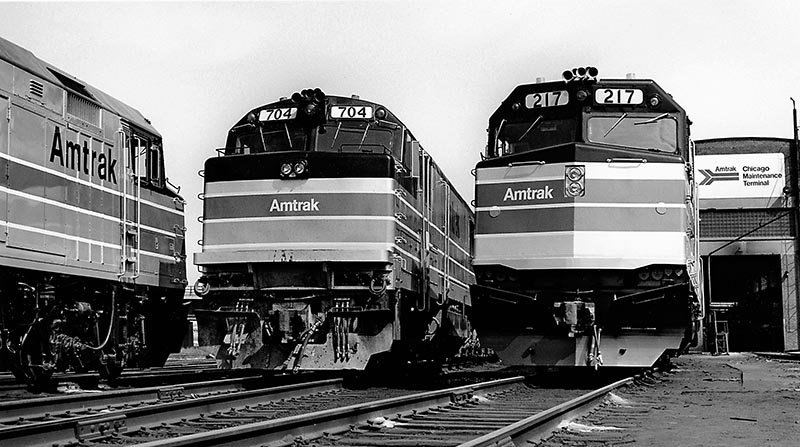Photography by Robert P. Olmsted
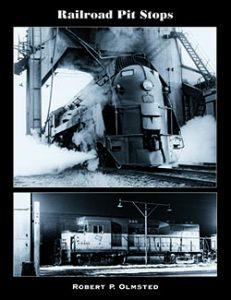 Pit Stops… those places where locomotives would go for some combination of food, water, medical attention, and rest. They could vary anywhere from a simple one-locomotive spot to the grand roundhouses of the steam era. Spanning a 40-year period from 1948 to 1984, legendary photographer Robert P. Olmsted visited engine terminals and roundhouses from Ohio to Nebraska, including brief visits to Canada and Mexico. “Railroad Pit Stops” is a new book from White River Productions that showcases Olmsted’s rich black and white photography, featuring beautiful portraits of steam and diesel locomotive from across the country.
Pit Stops… those places where locomotives would go for some combination of food, water, medical attention, and rest. They could vary anywhere from a simple one-locomotive spot to the grand roundhouses of the steam era. Spanning a 40-year period from 1948 to 1984, legendary photographer Robert P. Olmsted visited engine terminals and roundhouses from Ohio to Nebraska, including brief visits to Canada and Mexico. “Railroad Pit Stops” is a new book from White River Productions that showcases Olmsted’s rich black and white photography, featuring beautiful portraits of steam and diesel locomotive from across the country.
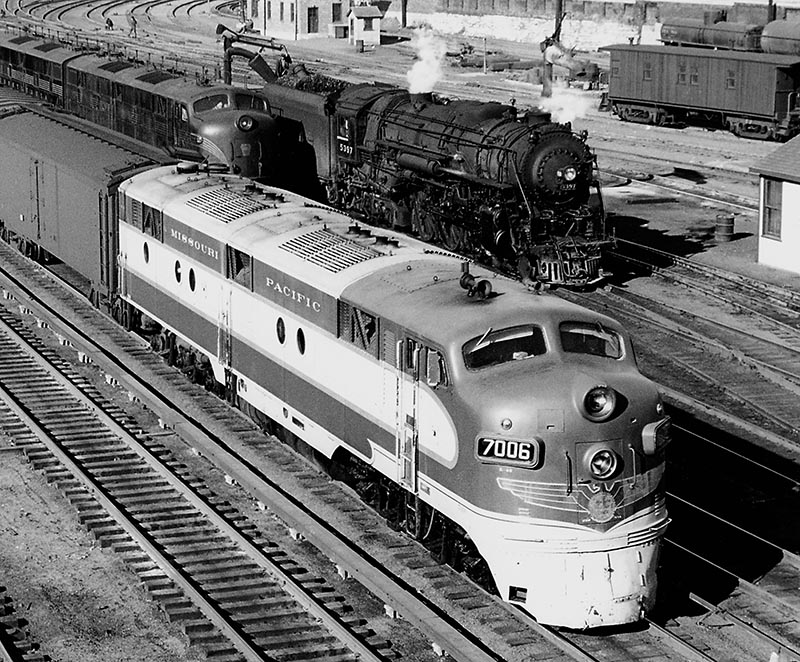
So much to see in this scene! Missouri Pacific E7A No. 7006 has arrived in St. Louis, Mo., on December 7, 1952, with a mail and express train trailed by a single rider coach. Now the EMD E7A will back the consist into the stub-end station. New York Central 4-6-4 No. 5397 is taking water while Pennsy E7A’s look on. But, all will be on the road within a few hours.
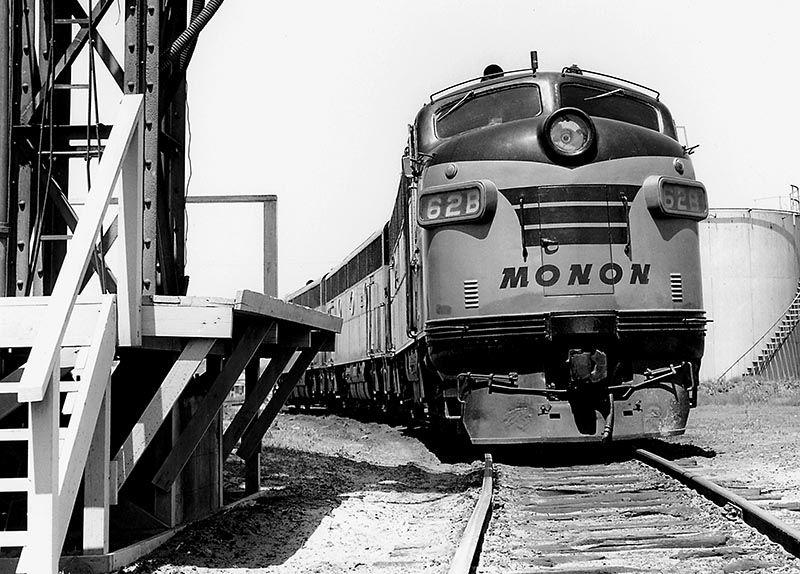
The Chicago, Indianapolis & Louisville Railway, known simply as the Monon Railroad, ordered F3’s from Electro-Motive to dieselize road passenger and freight hauls. The 62B and mates are at the railroad’s Hammond, Ind., diesel facility on May 24, 1957. The Monon’s route structure was in the shape of an “X”, from Chicago to Indianapolis and Michigan City to Louisville, Ky. The two lines crossed at Monon, Ind., hence the name.
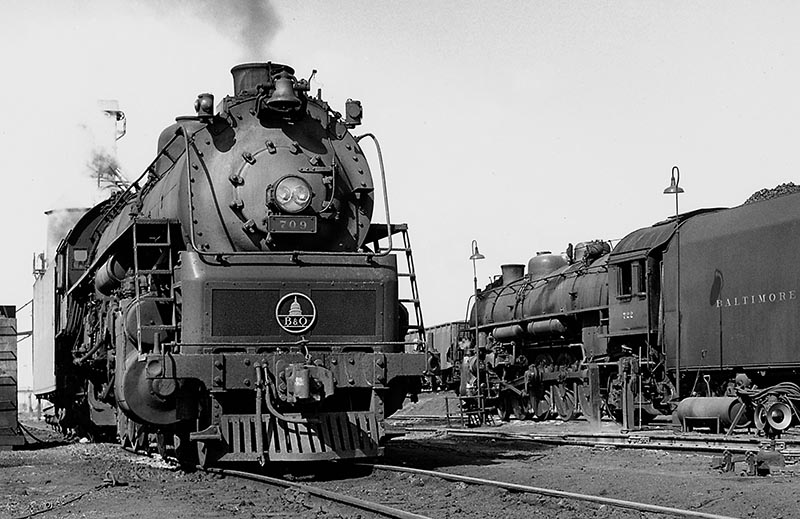
Baltimore & Ohio built forty 4-8-2’s in railroad class T-3 in their own Mt. Clare Shops. These locomotives utilized the boilers from older power being scrapped and the railroad put high-speed 70-inch drivers on them. Originally numbered 5555-5594, they were renumbered into the 700’s in an early 1957 system revision. Two Baltimore & Ohio 4-8-2’s. the 709 and 722, are at the railroad’s Barr Yard in south suburban Chicago on March 30, 1957.
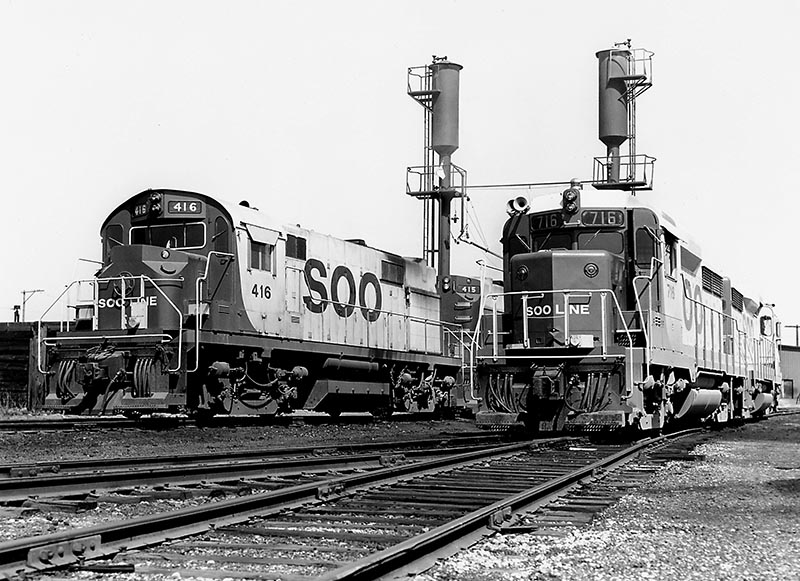
During April 1965, the Soo Line’s two Alco RS27s, 415 and 416, still were making road trips. Here, the 416 and 415 pose with GP30 #716 in Schiller Park, Ill., on the 27th of April. It wouldn’t be long before the two RS27s would be confined to transfer hauls around the Twin Cities in Minnesota. Not being particularly well-liked by the mechanical forces, the Alcos none-the-less worked from 1962 until 1981, a quite respectable showing.
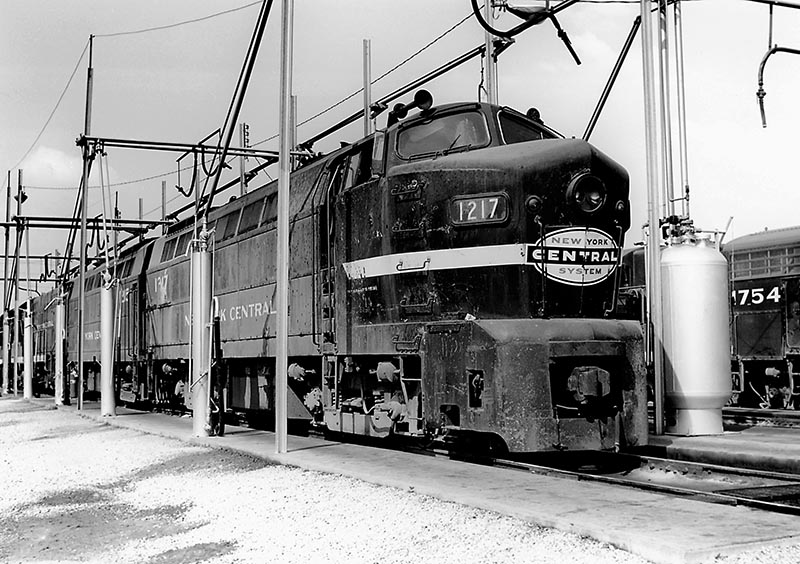
Baldwin “sharks” 1217 and 1215 lead a line of power in the New York Central’s impressive Sharonville, Ohio, servicing area on June 11, 1967. Baldwin Locomotive Works erected 160 RF-16 cabs and boosters between 1950 and 1953. The cab units featured a nose design that acquired the nickname “sharknose.” The New York Central’s diesel roster contained 18 RF-16 cabs and 8 boosters, numbered originally 3804-3821 and 3702-3709.
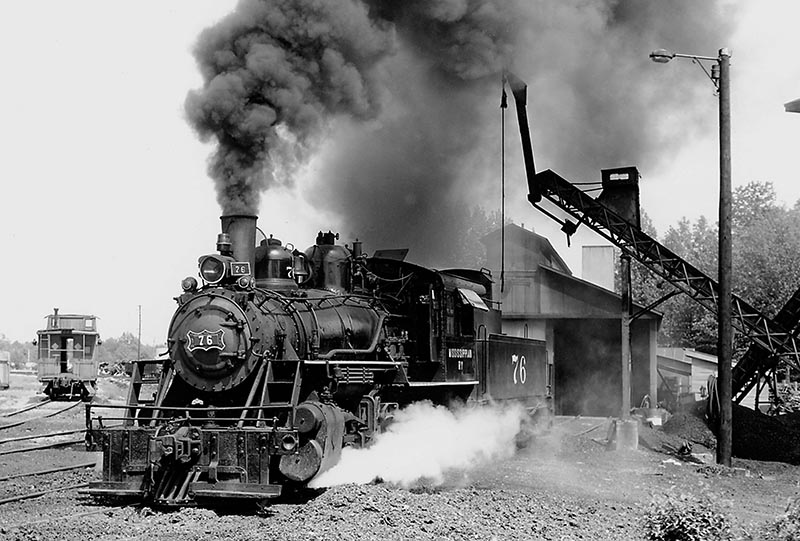
Acquired from the Frisco Railway in 1947, two trim little 2-8-0’s comprised the late steam-era roster of the Mississippian Railway. Mississippian’s 76 and 77 were used by the Carlisle brothers, James and Frank, to alternate in working from the road’s Amory terminal to Fulton, Miss., and return, a 24-mile each way haul. When the 76 was working, James was the engineer and Frank was the conductor. When Frank’s 77 was up front, their roles were reversed. Clay products and lumber were the main revenue sources for the line. The 2-8-0’s originally were constructed by the Baldwin Locomotive Works in 1920. On April 30, 1964, the 76 eases out of the Mississippian’s engine house and by the coal chute, ready for the work of the day, after topping off the water in the tender of course.
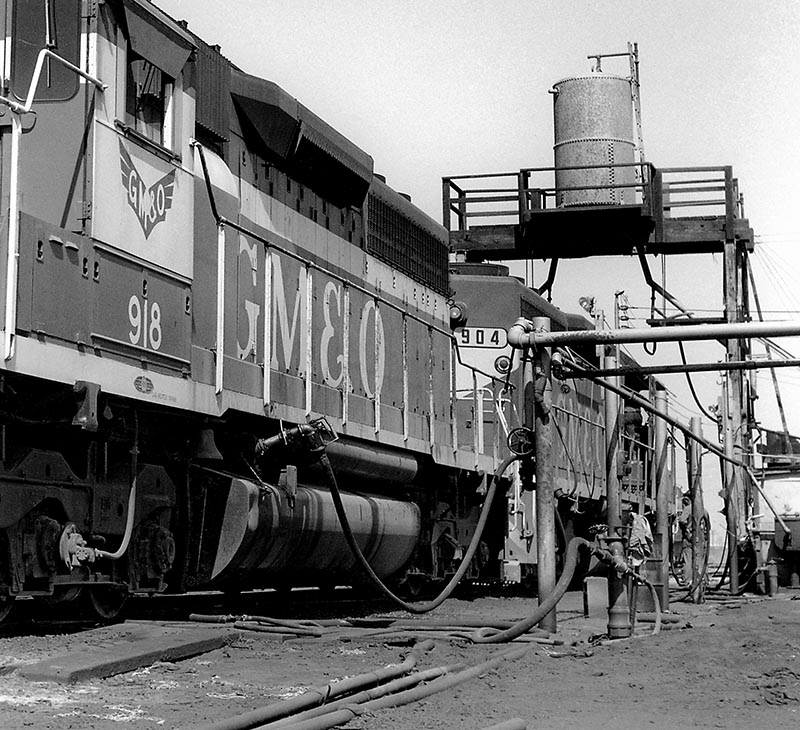
Two of the Gulf, Mobile & Ohio’s twenty-one SD40’s, engines 918 and 904, are being fueled at the railroad’s Chicago-area Glenn Yard engine pad on April 10, 1971. In addition to SD40’s 901-921, the GM&O rostered SD40X #950, an EMD demonstration unit, featuring SD40 machinery mounted on an SD35 frame, built in 1964 and originally numbered EMD 434.
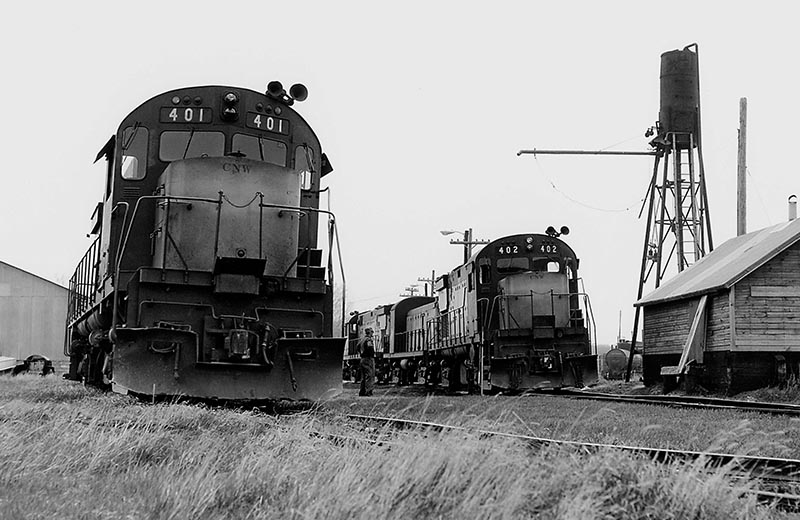
During the 1970’s, Waseca, Minnesota, was a top destination as photographers could find both Alcos on the east-west line from Winona, Minn., to Huron, S.D., and EMD F’s working north-south on the C&NW’s ex-Minneapolis & St. Louis route. On April 27, 1974, Century 425’s 401 and 402 are on the east end of two sets of power being prepared for the next C&NW trains 482 eastward and 495 westward.


